Tomás Saraceno’s aerosolar collaboration with Ruinart takes flight
In the skies above Maison Ruinart, Tomás Saraceno’s Aerocene project is imagining a world beyond the fossil fuel era. Wallpaper* Paris editor Amy Serafin was in Reims to witness the events first hand – a blend of performance, sculpture, augmented reality, and champagne
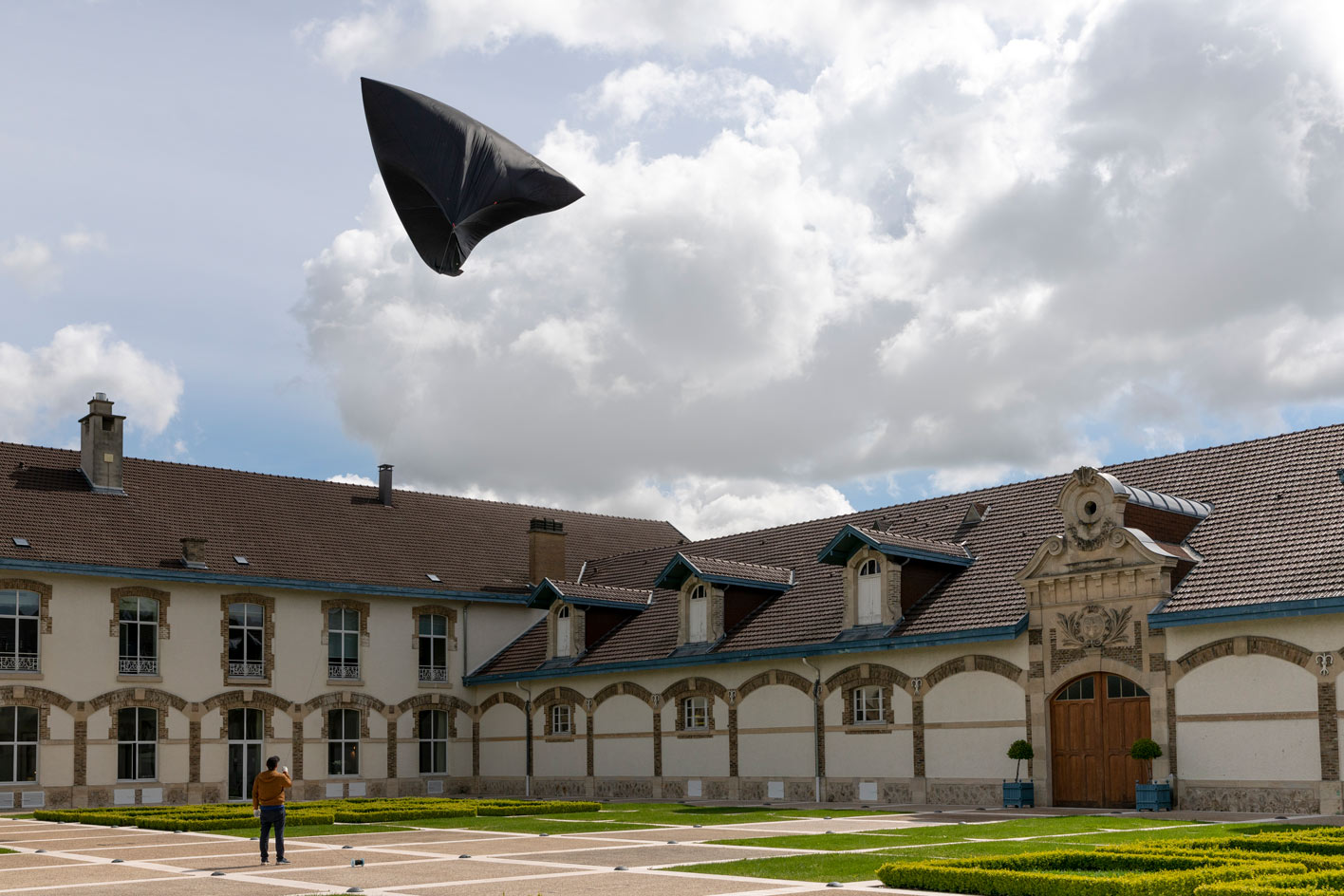
It was the evening before the Argentine artist Tomás Saraceno was to present his Aerocene project in the sky above Maison Ruinart, and dinner was being served 38m underground.
As guests sipped a 2006 Dom Ruinart Blanc de Blancs in the champagne house’s magnificent crayères, the 19th-century chalk quarries where some of the world’s best bottles are aged, Saraceno made a short speech. He wondered about the weather forecast – both for the next day and 100 years in the future. He said there is a part of Argentina where indigenous people know it will rain just by looking at the colour of spiders. But for most people, he said, ‘the only way to know about the weather is to look at their iPhone. And [here in the crayères] there is no Wi-Fi!’ Maybe, he suggested, we needed to change our way of sensing the world.
In any case, the weather was worrying him. If it rained the next day, as it had unceasingly for weeks, his performance would have to be cancelled.

Argentine artist Tomás Saraceno pictured in the vineyards at Maison Ruinart where he staged the latest chapter in his Aerocene project
Saraceno’s Aerocene project is part of a ten-year countdown to the 300th anniversary of Ruinart’s founding in 1729. Each year, the house has commissioned a different artist or architect to create a work that deals with sustainability. As Ruinart’s president, Frédéric Dufour, explained, ‘We believe that art has the power to connect people and make the world better.’
The year 2029 is also perilously close to the UN deadline for humanity to save the planet from the climate crisis. Saraceno is passionately devoted to that goal. His work – with everything from spider webs to cloud cities – aims to change the way that humans inhabit the Earth.
Aerocene is an open-source, interdisciplinary community project that explores alternatives to fossil fuel-powered flight. Rather than flying, Saraceno proposes that we embrace drifting, attached to an aerosolar sculpture that is propelled by only the sun and the wind. And, he pointed out, if land art is an accepted concept, why not sky art?
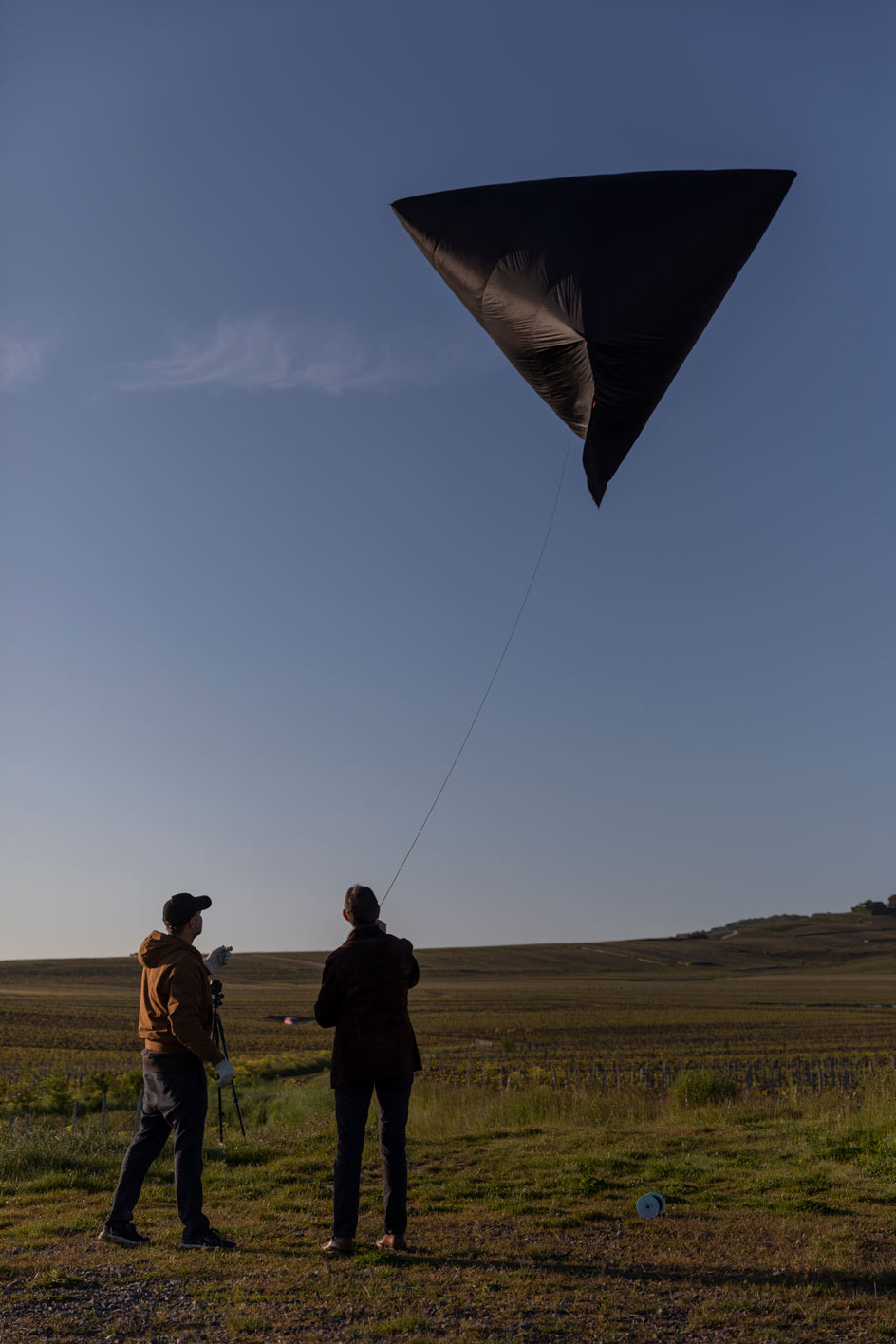
Tomás Saraceno with Ruinart’s cellarmaster, Frédéric Panaiotis, in the vineyards at Maison Ruinart with an Aerocene sculpture
The next morning, after many glasses of champagne and very little sleep, the guests congregated at 8am in the Ruinart courtyard, under a blue, nearly cloudless sky – a small miracle. Saraceno asked us to stand in a circle and meditate for a moment, listening to the birds. Afterwards his assistant, Lucía Cash, read a text about floating rather than flying as ‘a necessary future’. Lorenzo Malloni, an Aerocene flight trainer, put an Aerocene Backpack on the ground and unfolded a black nylon aerosolar sculpture.
Assisted by one of the guests (Garance Primat, who will install one of Saraceno’s aerial structures at her Domaine des Etangs estate in 2022), Malloni grabbed the sculpture at its opening and ran around the courtyard for several minutes. Slowly, it filled with air and swelled up to become an enormous, triangular, inflated pillow.

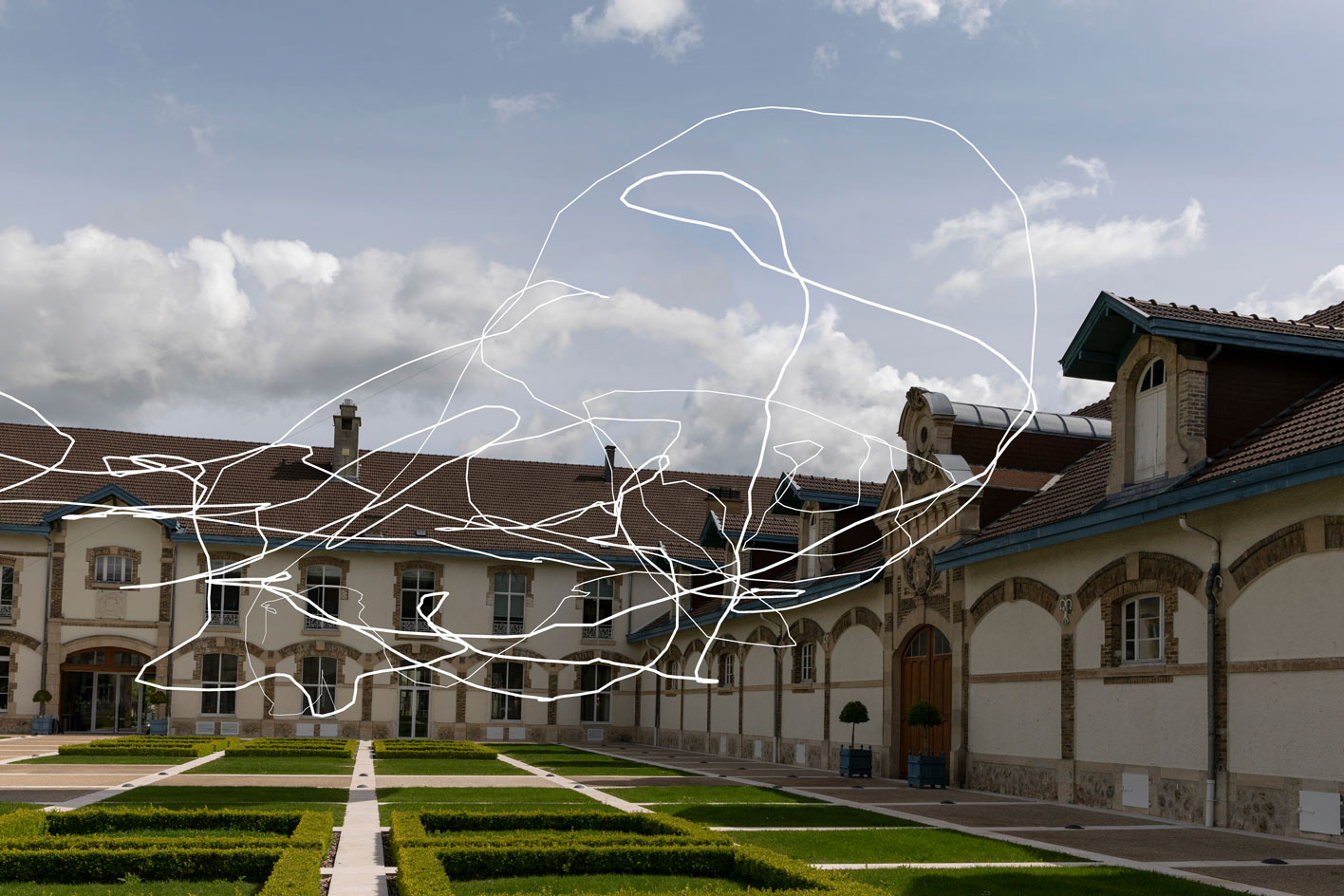
The aerosolar sculpture acts like an artist’s brush, creating an invisible trail in the sky that mirrors nature’s rhythms. This is then converted into a digital drawing, or what Saraceno calls an ‘Aeroglyph’
Saraceno tied off the opening with a length of rope attached to a spool and started to walk the sculpture slowly around the courtyard, waiting for the air inside to be heated by the sun. As he walked back and forth, it followed, turning like a wild horse on a lead, rising a few centimetres from the ground, then gently touching down again.
And then, suddenly: flight. The sculpture drifted silently up into the air, the moon still faintly visible behind it. It used no fossil fuels, no flame – just the sun and the wind.
When it momentarily floated back to ground level, Saraceno and Malloni attached several instruments to the bottom, including a GPS tracker to record the flight path. The aerosolar sculpture acts like an artist’s brush, creating an invisible trail in the sky that mirrors nature’s rhythms. This is later converted into a digital drawing, or what the artist calls an ‘Aeroglyph’. He compared the meandering line to a signature: ‘I’m trying to read that drawing. What the sun and wind are telling us. If we write these letters, pronounce them, it’s a new way of speaking.’
RELATED STORY

Tomás Saraceno, towards an Aerocene era, Making of Movement, 20.05.2021 Reims, France. Augmented reality Aeroglyphic sculpture formed by a site-specific trajectory made with the Aerocene Backpack, sensed through the Aerocene app. A movement to free the air from fossil fuels, lifted only by the air and sun and moved by the wind. For Maison Ruinart
The Aeroglyph would be uploaded to the Aerocene app, making this ephemeral experience available in augmented reality to a global community. Saraceno wants the app to serve as an interface and decentralise his activities. (He is the rare artist who dreams that others will copy his work.) Anyone can send an email to the non-profit Aerocene Foundation, borrow an Aerocene Backpack, and try it out themselves.
The Aerocene project has also achieved human flight, using only solar power to carry people up to 2km away. In an ideal world, Saraceno said, he would have made the journey from his home to Ruinart this way. ‘Though the wind direction is not the best coming from Berlin – I would go to Russia, Japan, America, and then Reims.’
A few guests took turns putting on gloves and piloting the sculpture. The experience was by turns meditative and challenging, as the wind currents had their way. Ruinart’s cellarmaster, Frédéric Panaiotis, compared the sensation to free diving: ‘Tension, then lightness.’ Indeed, Saraceno often cites Evangelista Torricelli, a student of Galileo, who said we live at the bottom of an ocean of air.


Later that morning, the group moved to the vineyards, to repeat the performance. The wind was higher now, and it took three people to hold onto the rope. The sun was also strong, and while some guests rode bicycles through the vines, others sought out the shade.
Panaiotis has long seen the creeping menace of climate change in the vineyards. In 30 years, the average temperature in Champagne has risen by 1.3 degrees Celsius. The grapes are ripening more quickly, the harvest starting earlier. Unseasonably mild weather last winter followed by a cold snap in April destroyed an estimated 20 per cent of the champagne crop in one night. Panaiotis pointed out branches that were killed by the frost, patches of mildew on leaves and dangerous moths. ‘We live with it, but it’s getting more and more challenging,’ he said. ‘One degree for most people is nothing. But for us, it’s a lot.’
Ruinart has started nurturing biodiversity in its vineyards, planting hedges around them, attracting birds and insects. This fall, after the harvest, they will take the unprecedented measure of ripping out hundreds or even thousands of invaluable grape vines and replacing them with plants and hedges in and among the vines. They know this will affect their bottom line, at least in the short term. So why are they doing it? ‘Because we can afford it,’ said Panaoitis. ‘And we want to set an example: look, it’s possible.’
He believes that Aerocene can help awaken others to the reality of climate change. ‘This takes a phenomenon that is invisible for most people and makes it visible. You see that the difference of only plus 1 degree Celsius makes it float, while minus 1 degree Celsius can kill young vines.’
The flight was now complete, and Saraceno’s team packed up the Aerocene Backpack, which Ruinart would keep. After lunch and another few glasses of champagne, the guests departed, each with a small Chardonnay vine to plant at home. The next day, it started to rain again.
Receive our daily digest of inspiration, escapism and design stories from around the world direct to your inbox.

Tomás Saraceno and Frédéric Panaiotis in the vineyards at Maison Ruinart

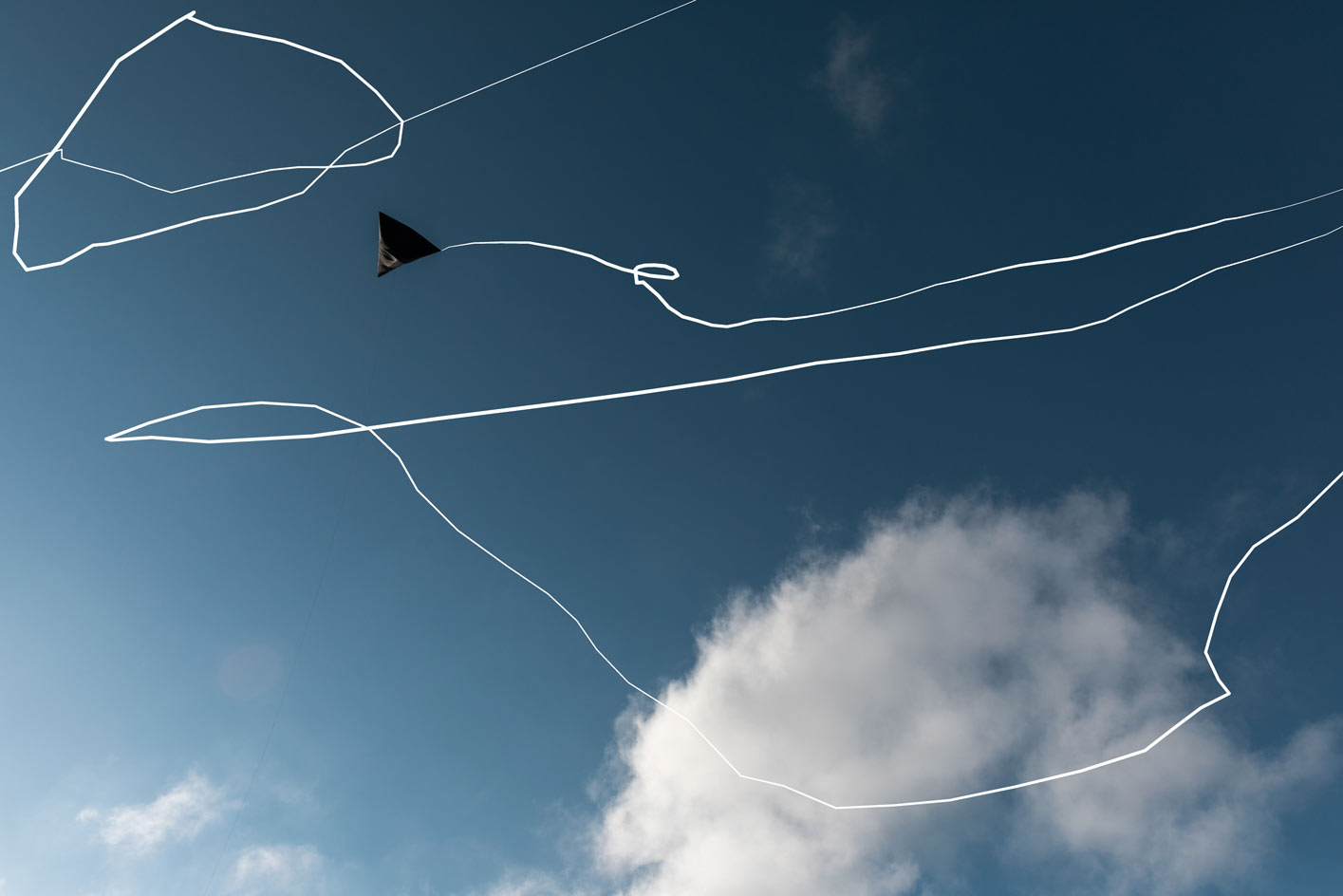
Tomás Saraceno, towards and Aerocene era Making of Movement [49.190091, 4.064507] 20.05.2021 Reims, France. augmented reality Aeroglyphic sculpture for Maison Ruinart

INFORMATION
Amy Serafin, Wallpaper’s Paris editor, has 20 years of experience as a journalist and editor in print, online, television, and radio. She is editor in chief of Impact Journalism Day, and Solutions & Co, and former editor in chief of Where Paris. She has covered culture and the arts for The New York Times and National Public Radio, business and technology for Fortune and SmartPlanet, art, architecture and design for Wallpaper*, food and fashion for the Associated Press, and has also written about humanitarian issues for international organisations.
-
 ‘I want to bring anxiety to the surface': Shannon Cartier Lucy on her unsettling works
‘I want to bring anxiety to the surface': Shannon Cartier Lucy on her unsettling worksIn an exhibition at Soft Opening, London, Shannon Cartier Lucy revisits childhood memories
-
 What one writer learnt in 2025 through exploring the ‘intimate, familiar’ wardrobes of ten friends
What one writer learnt in 2025 through exploring the ‘intimate, familiar’ wardrobes of ten friendsInspired by artist Sophie Calle, Colleen Kelsey’s ‘Wearing It Out’ sees the writer ask ten friends to tell the stories behind their most precious garments – from a wedding dress ordered on a whim to a pair of Prada Mary Janes
-
 Year in review: 2025’s top ten cars chosen by transport editor Jonathan Bell
Year in review: 2025’s top ten cars chosen by transport editor Jonathan BellWhat were our chosen conveyances in 2025? These ten cars impressed, either through their look and feel, style, sophistication or all-round practicality
-
 Sam Falls is inspired by nature’s unpredictability in living works for Ruinart
Sam Falls is inspired by nature’s unpredictability in living works for RuinartThe artist creates works that are in-between photography and painting as part of Ruinart's Conversations with Nature series
-
 Julian Charrière brings the sounds of the ocean to Ruinart’s chalk cellars in Reims
Julian Charrière brings the sounds of the ocean to Ruinart’s chalk cellars in ReimsJulian Charrière’s sound and light installation, ‘Chorals’, joins the worlds of environmental science and culture
-
 Rolf Sachs’ largest exhibition to date, ‘Be-rühren’, is a playful study of touch
Rolf Sachs’ largest exhibition to date, ‘Be-rühren’, is a playful study of touchA collection of over 150 of Rolf Sachs’ works speaks to his preoccupation with transforming everyday objects to create art that is sensory – both emotionally and physically
-
 Architect Erin Besler is reframing the American tradition of barn raising
Architect Erin Besler is reframing the American tradition of barn raisingAt Art Omi sculpture and architecture park, NY, Besler turns barn raising into an inclusive project that challenges conventional notions of architecture
-
 What is recycling good for, asks Mika Rottenberg at Hauser & Wirth Menorca
What is recycling good for, asks Mika Rottenberg at Hauser & Wirth MenorcaUS-based artist Mika Rottenberg rethinks the possibilities of rubbish in a colourful exhibition, spanning films, drawings and eerily anthropomorphic lamps
-
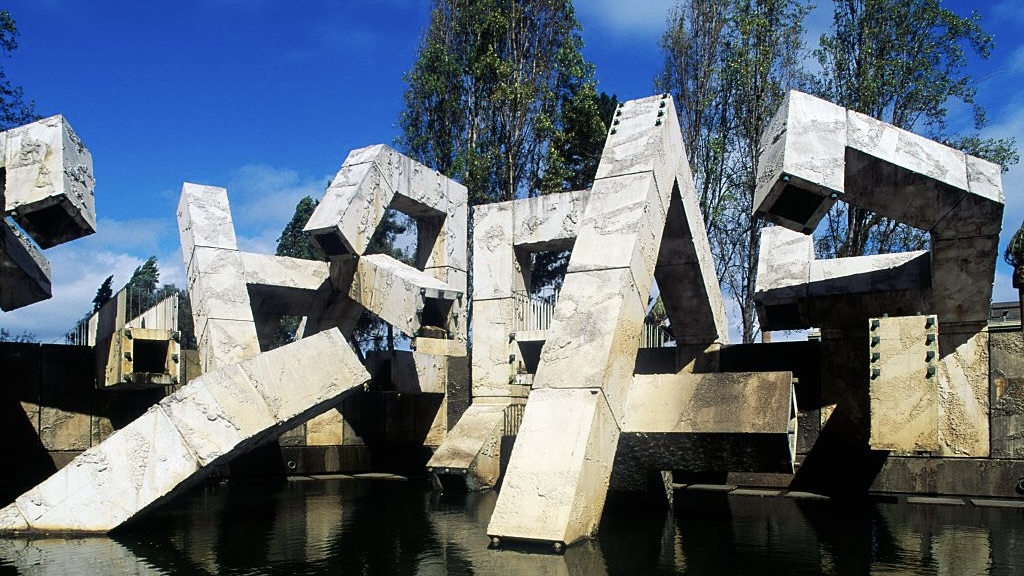 San Francisco’s controversial monument, the Vaillancourt Fountain, could be facing demolition
San Francisco’s controversial monument, the Vaillancourt Fountain, could be facing demolitionThe brutalist fountain is conspicuously absent from renders showing a redeveloped Embarcadero Plaza and people are unhappy about it, including the structure’s 95-year-old designer
-
 See the fruits of Niki de Saint Phalle and Jean Tinguely's creative and romantic union at Hauser & Wirth Somerset
See the fruits of Niki de Saint Phalle and Jean Tinguely's creative and romantic union at Hauser & Wirth SomersetAn intimate exhibition at Hauser & Wirth Somerset explores three decades of a creative partnership
-
 Technology, art and sculptures of fog: LUMA Arles kicks off the 2025/26 season
Technology, art and sculptures of fog: LUMA Arles kicks off the 2025/26 seasonThree different exhibitions at LUMA Arles, in France, delve into history in a celebration of all mediums; Amy Serafin went to explore
